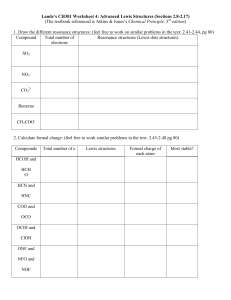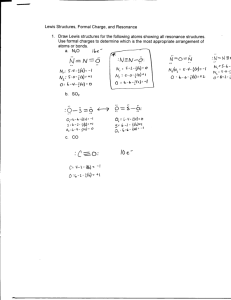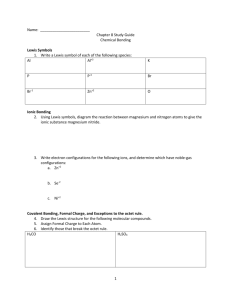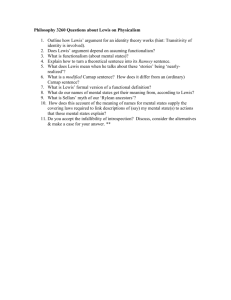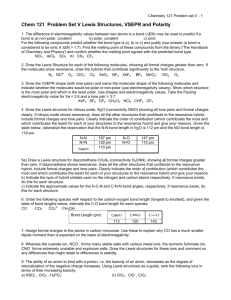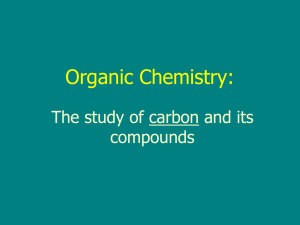Chapter 10
advertisement
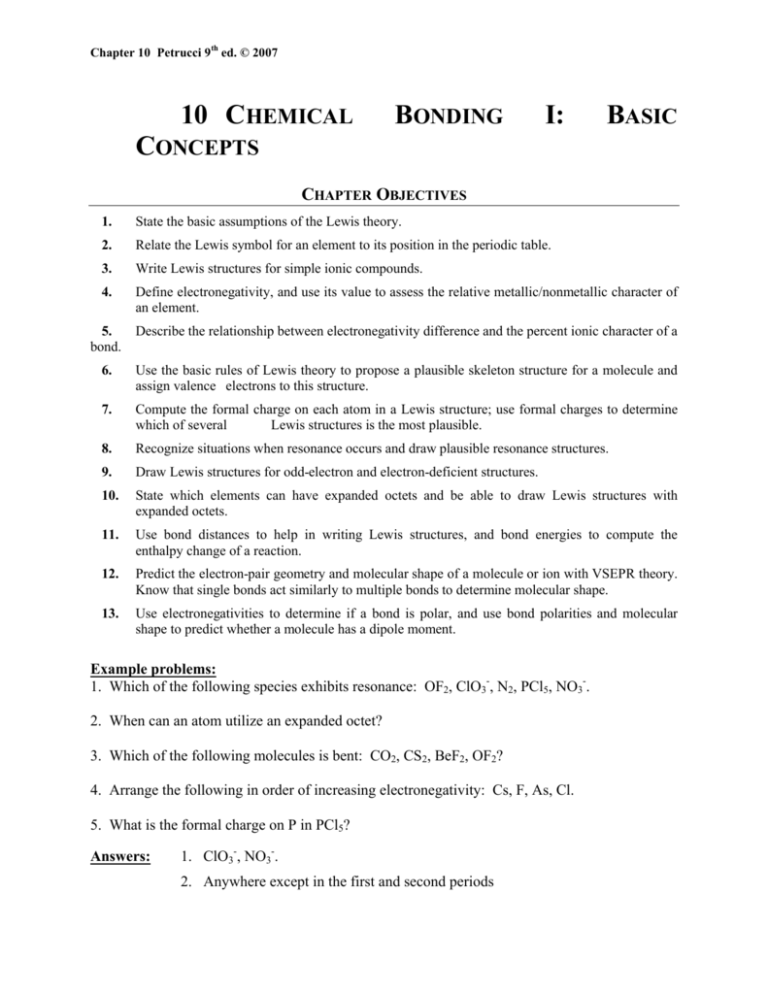
Chapter 10 Petrucci 9th ed. © 2007 10 CHEMICAL BONDING I: BASIC CONCEPTS CHAPTER OBJECTIVES 1. State the basic assumptions of the Lewis theory. 2. Relate the Lewis symbol for an element to its position in the periodic table. 3. Write Lewis structures for simple ionic compounds. 4. Define electronegativity, and use its value to assess the relative metallic/nonmetallic character of an element. 5. bond. Describe the relationship between electronegativity difference and the percent ionic character of a 6. Use the basic rules of Lewis theory to propose a plausible skeleton structure for a molecule and assign valence electrons to this structure. 7. Compute the formal charge on each atom in a Lewis structure; use formal charges to determine which of several Lewis structures is the most plausible. 8. Recognize situations when resonance occurs and draw plausible resonance structures. 9. Draw Lewis structures for odd-electron and electron-deficient structures. 10. State which elements can have expanded octets and be able to draw Lewis structures with expanded octets. 11. Use bond distances to help in writing Lewis structures, and bond energies to compute the enthalpy change of a reaction. 12. Predict the electron-pair geometry and molecular shape of a molecule or ion with VSEPR theory. Know that single bonds act similarly to multiple bonds to determine molecular shape. 13. Use electronegativities to determine if a bond is polar, and use bond polarities and molecular shape to predict whether a molecule has a dipole moment. Example problems: 1. Which of the following species exhibits resonance: OF2, ClO3-, N2, PCl5, NO3-. 2. When can an atom utilize an expanded octet? 3. Which of the following molecules is bent: CO2, CS2, BeF2, OF2? 4. Arrange the following in order of increasing electronegativity: Cs, F, As, Cl. 5. What is the formal charge on P in PCl5? Answers: 1. ClO3-, NO3-. 2. Anywhere except in the first and second periods 3. OF2 4. Cs < As < Cl < F 5. 0
